How to Perform a Facebook Audit: Strategies, Examples, and Tools
Discover how a Facebook audit can enhance your online presence. Learn how to analyze your profile, content, and audience for better results.


Many business owners and social media analysts avoid conducting a regular Facebook page audit because the sheer volume of data feels overwhelming.
You know there's valuable information buried in your years of Facebook activity, but making sense of engagement rates, reach statistics, and audience demographics without getting lost seems like a mission impossible.
But it’s not. With a plan and expert tools, like the ones I'm going to guide you through, you can turn that intimidating pile of data into actionable insights that actually improve your Facebook analytics and drive measurable business results.
Key takeaways
-
Keep your Facebook page details and visuals updated to ensure your brand looks professional and trustworthy.
-
Audit your content to identify which formats and themes drive the most engagement and which ones underperform.
-
Analyze your audience demographics to confirm you’re reaching the right people with the right content.
-
Dig into performance metrics to understand growth trends, engagement distribution, and content reach.
-
Compare organic versus paid results to evaluate ROI and optimize your content and ad strategies.
-
Track competitors’ data to benchmark performance, spot industry trends, and uncover content opportunities.
Why is it essential to create regular Facebook performance audits?
Running a Facebook performance audit isn’t something you should do just once and forget about—it’s a process that needs to be repeated regularly. Facebook’s algorithm, features, and audience behaviors evolve constantly, so the tactics that worked last year may no longer bring results today.
Here’s why consistent audits are essential for your brand’s growth:
- Adapt to algorithm changes – Facebook often updates how content is distributed and prioritized. Regular audits help you see how these updates impact your reach and engagement.
- Spot performance trends early – By comparing quarterly or monthly results, you can identify whether engagement, impressions, or ad ROI is going up or down and adjust before small issues become bigger problems.
- Keep your strategy audience-centered – Your followers’ interests, demographics, and behaviors change over time. Audits ensure your content and messaging stay relevant.
- Stay competitive – Brands that actively monitor performance are quicker to spot opportunities—like testing new formats or capitalizing on trending topics—before competitors do.
A regular Facebook performance audit acts like a feedback loop for your social media strategy. It gives you the data you need to refine your approach, maximize ROI, and stay ahead in a crowded digital space.
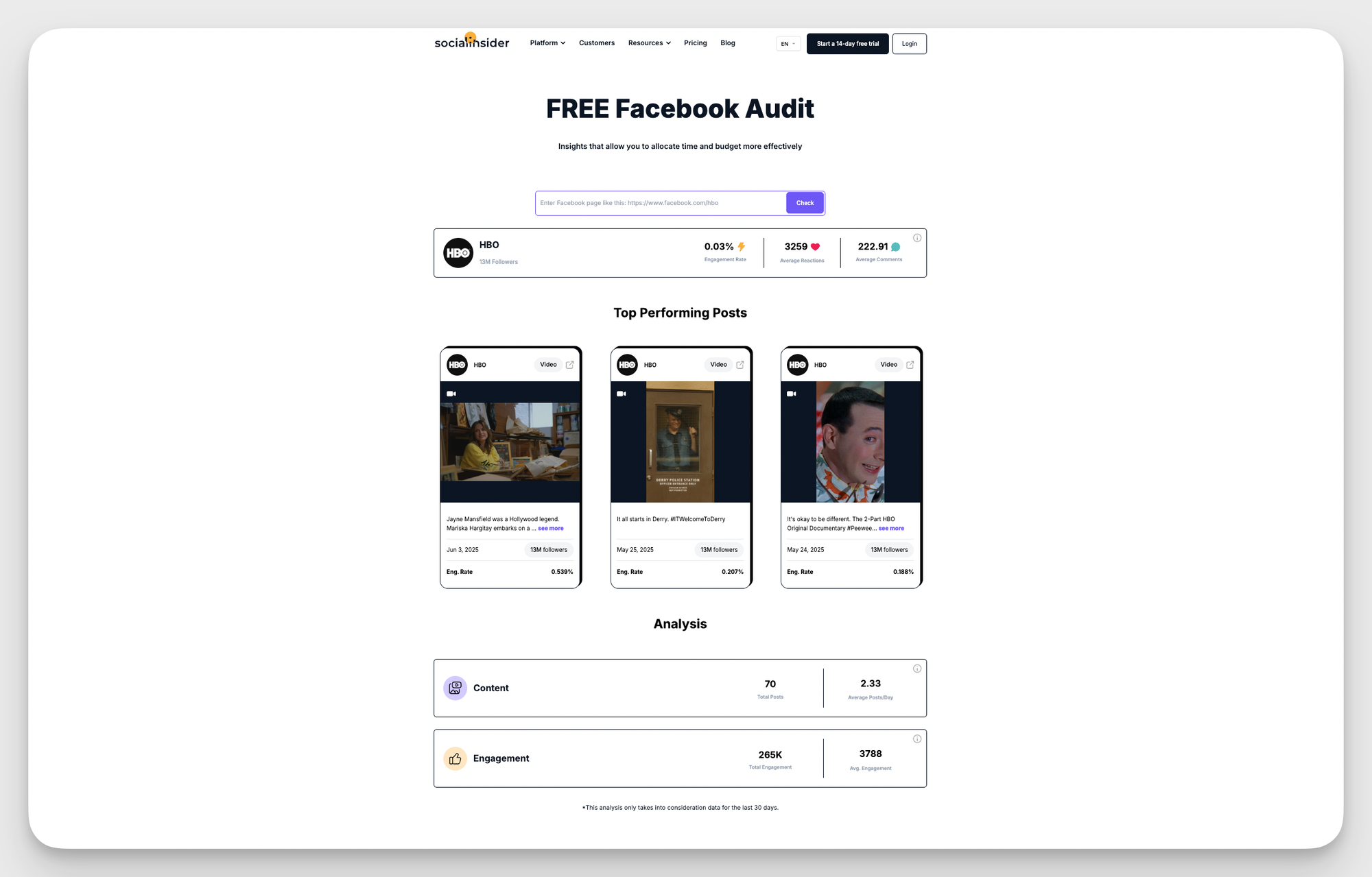
How to conduct an effective Facebook audit?
Running a thorough Facebook audit means examining every aspect of your page's performance to understand what's working, what isn't, and where you're missing opportunities.
Every good mission needs a plan, and this six-step approach to social media is your blueprint for infiltrating Facebook's data vault. Moving forward, I'll break down the process into manageable pieces, using real examples to demonstrate each technique.
Check that the basic elements of your Facebook page are up to date
Before examining performance data, I suggest checking that your Facebook page foundation is solid. Start with your contact information: verify your business address, phone number, website URL, and hours of operation are current.
Your call-to-action button placement should align with your primary business goals, whether that's driving website visits, encouraging bookings, or generating leads.
Pay special attention to your visual elements. Your profile photo should be recognizable at small sizes, while your cover photo needs to communicate your brand message clearly.
These elements create the first impression for new visitors, so they must accurately represent your current brand identity and positioning.
Side note: I had a short chat with Kassandra Quinn, Social Media Strategist at ModSquad and she shared me how her process looks like:
When I run a social media audit, I’m looking for alignment across voice, visuals, content, and strategy. It’s not just about what we’re posting, but whether it supports the brand’s goals and speaks to the right audience.
Here’s how I usually approach it:
- Voice and branding: Is the tone consistent and recognizable across platforms?
Strategic alignment: Are we reinforcing key business goals? - Channel purpose and cadence: Are we using each platform intentionally and posting at a pace that makes sense? Is there one channel that is providing more ROI than others? Is there any data that points to eliminating or adding a new platform etc?
- Engagement quality: Who is interacting with the content and what types of posts are actually performing?
- Metrics and performance: What do the numbers show us? I look at reach, impression, engagement, and growth trends—but also how they tie back to bigger goals.
- Overall cohesion: Does everything feel connected, intentional, and reflective of the brand.
The goal is to get a clear, data-informed picture of what’s working, what feels off, and how to refine the strategy moving forward.
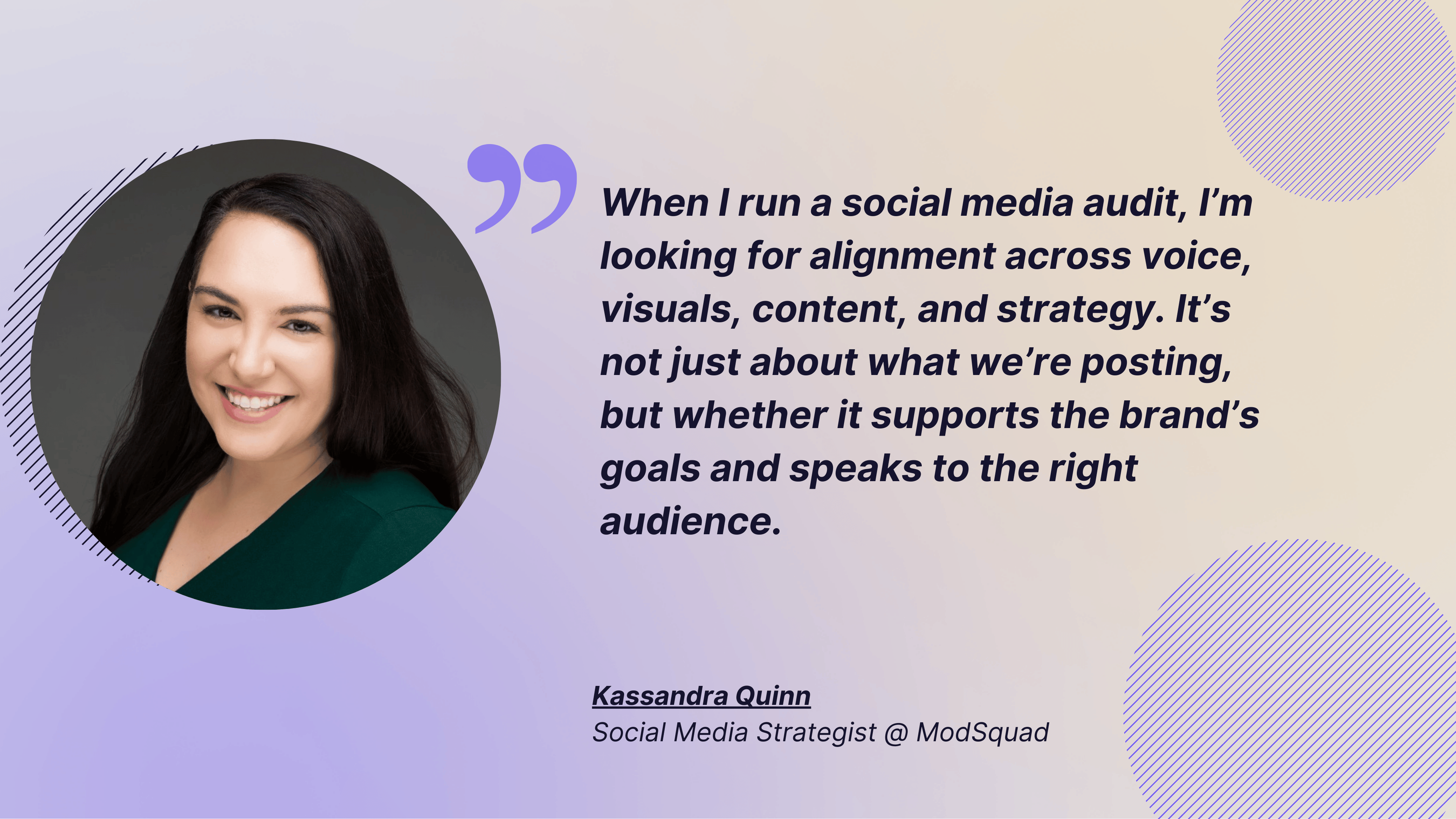
Start with a content audit
Your mission, should you choose to accept it, is to identify which content formats are secretly sabotaging your engagement rates.
Different post types, like photos, videos, links, and status updates, generate varying levels of engagement depending on your audience preferences and Facebook's algorithm priorities.
For example, I've run a short analysis example of BMW’s Facebook performance below, and I discovered that albums consistently achieved the highest engagement rates, followed by Reels.
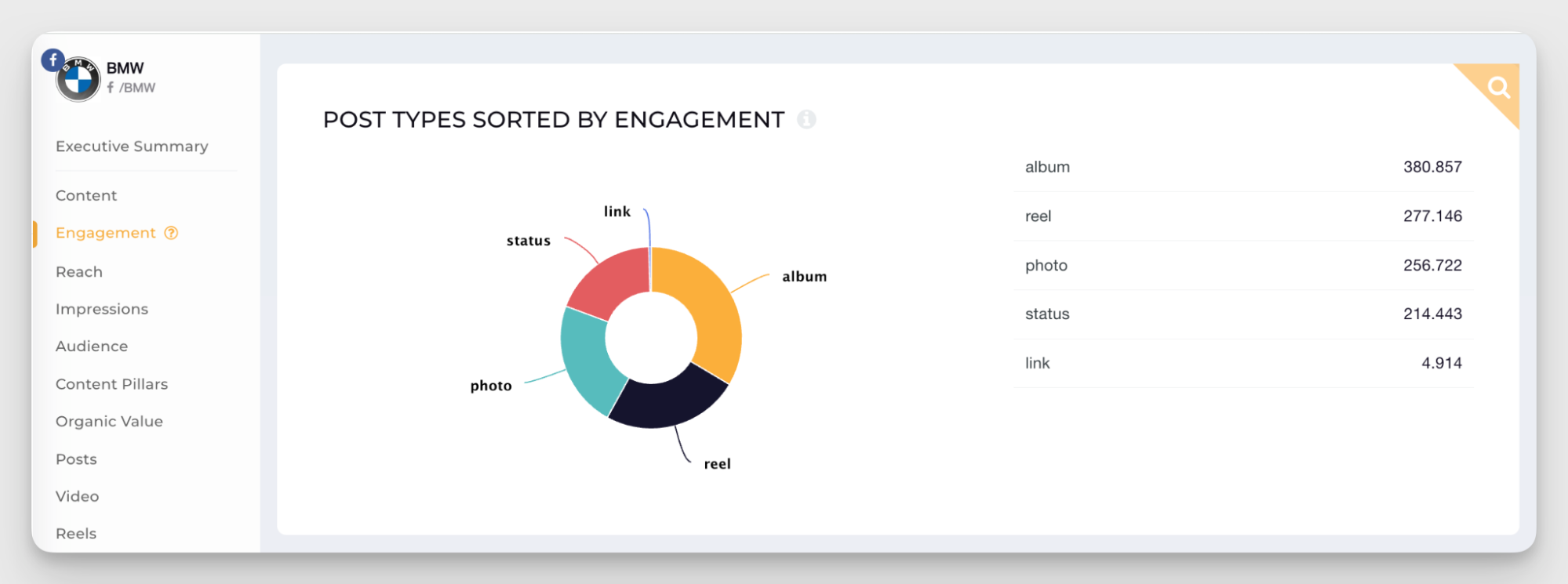
This type of data reveals which formats your audience prefers and helps guide your future content strategy decisions.
Next, identify your top and bottom-performing posts to understand what resonates with your audience, as in the example below.
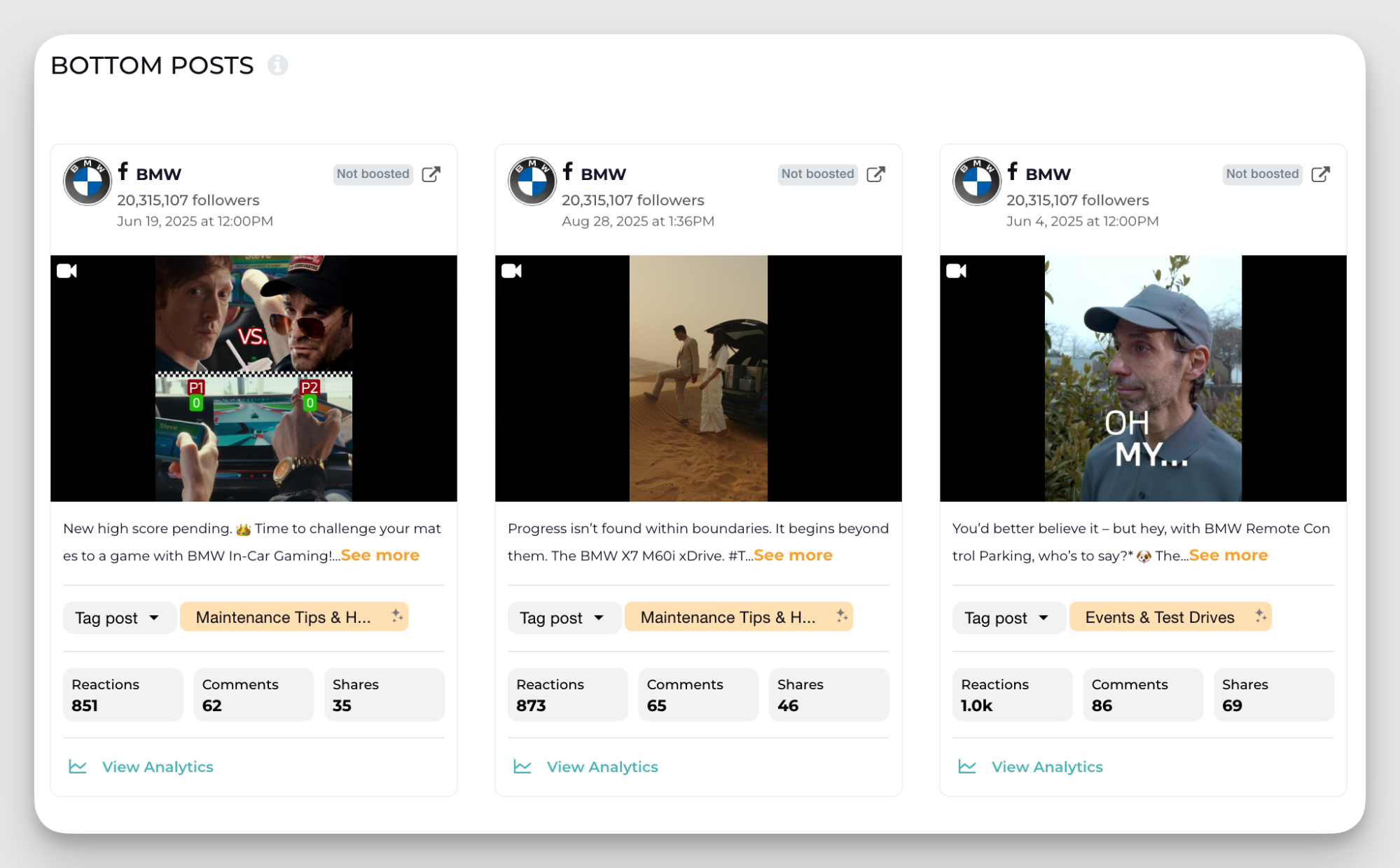
Through this Socialinsider post analysis, I could easily identify BMW's lowest-engagement content. I recommend studying them, as these posts reveal content themes or formats that fail to connect with the audience.
And also, the best-performing content pillars deserve attention, too.
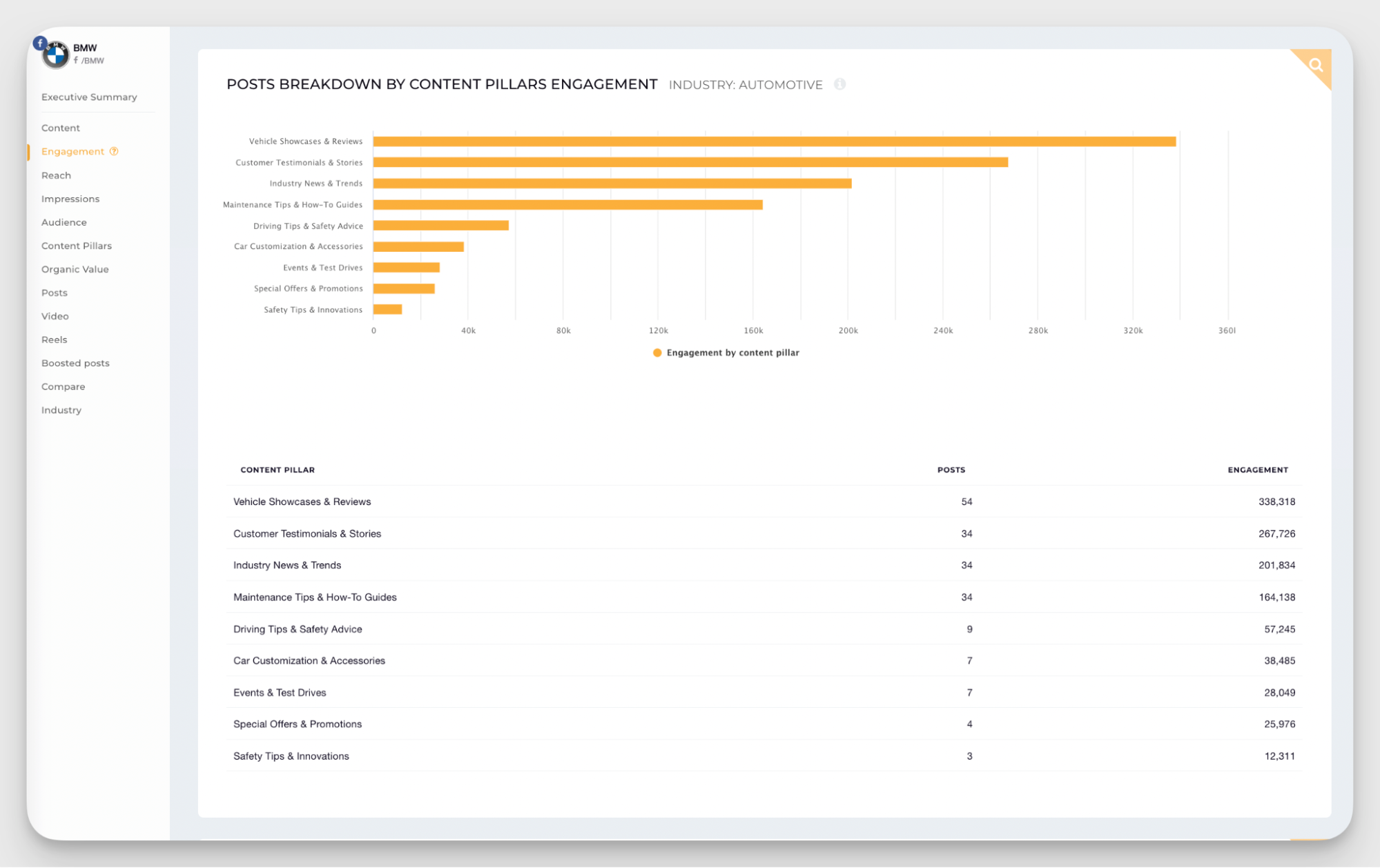
BMW's content pillar analysis demonstrates that "Vehicle Showcases & Reviews" is its strongest performing category, followed by “Customer Testimonials & Sorties” and “Industry News & Trends”. At the other end of the spectrum, “Safety Tips & Innovations” has the lowest engagement.
This type of insight helps you understand which topics your audience finds most valuable and should inform your editorial calendar planning. Lower-performing pillars aren’t necessarily to be discarded if they’re important to your brand, but you can tweak the format and messaging to make them more appealing.
Do a Facebook audience analysis
Your content might be high-quality, but if it's not reaching your intended demographic, your social media audit will reveal misalignment between your target audience and actual followers.
Here's a geographical distribution analysis I ran for BMW, to identify where their fans are located, and what type of audiences their current strategy is attracting.
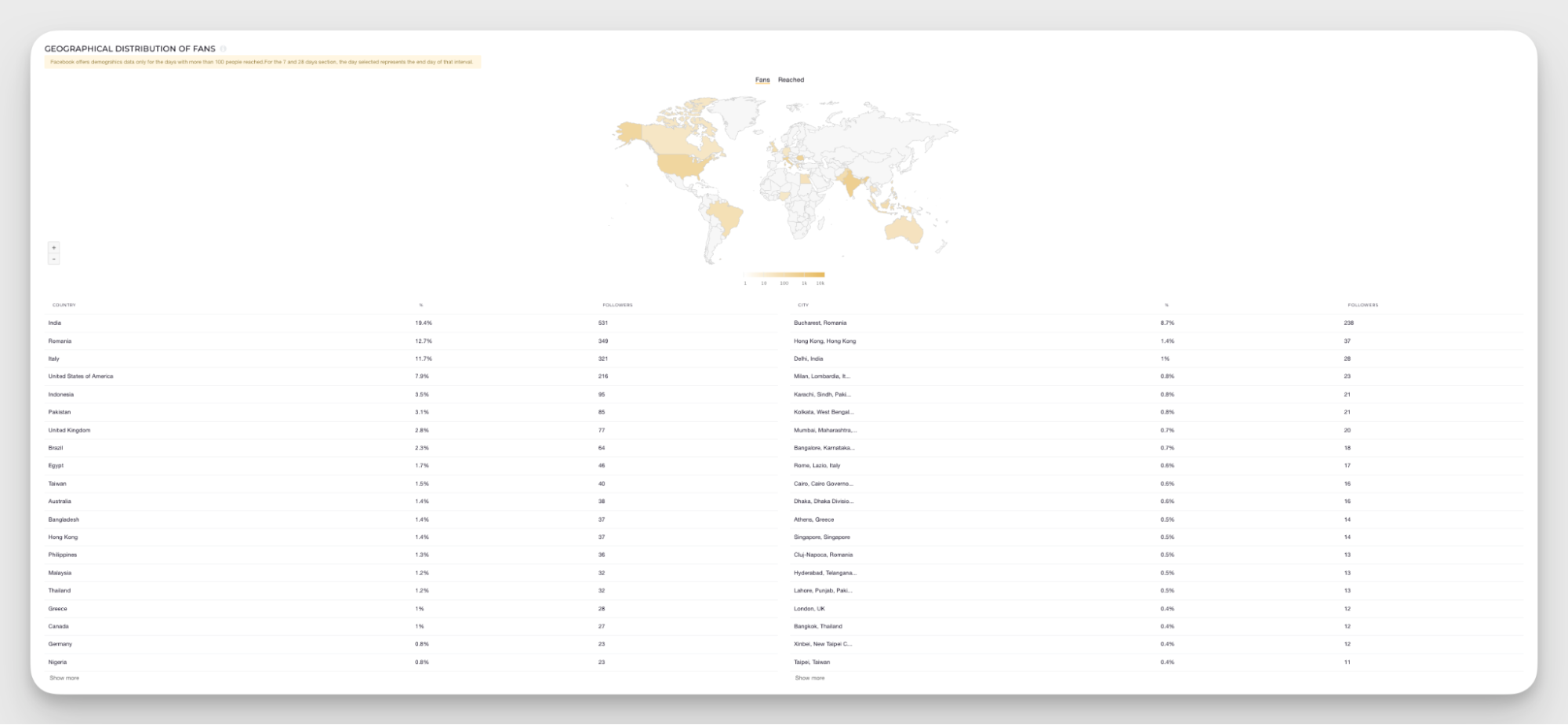
During the audit, I recommend that you review age demographics, gender splits, and location data to ensure your content speaks to the people who actually follow your page.
For example, if you're targeting young professionals but your actual audience is older, you might want to keep publishing popular content formats, while gradually introducing posts that appeal to younger users through features that younger demographics prefer, such as Stories and Reels.
Go deeper into performance metrics
Understanding your followers and growth trends provides crucial context for your Facebook performance analysis.
For example, the fan count tracking revealed the brand in my example experienced a -0.16% decline, losing 32K followers over the analyzed period. This negative growth signals potential issues with content relevance or posting frequency that require immediate attention.
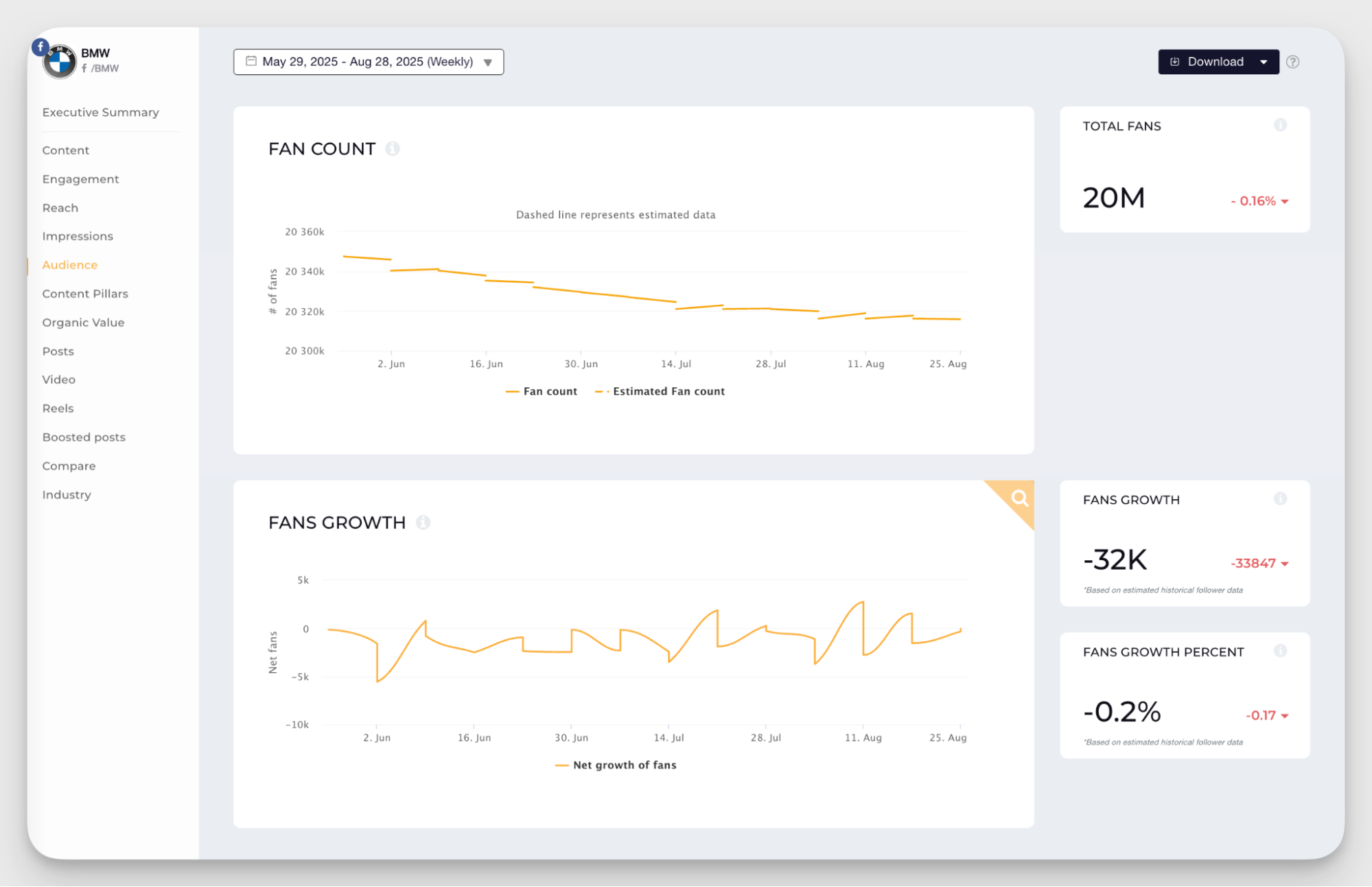
But the engagement distribution told me a more nuanced story. The Facebook engagement metrics below showed 1.1M total engagements with a healthy growth of +49%, indicating that while follower count declined, existing followers became more active. This suggests content quality improved even as Facebook reach might have decreased.
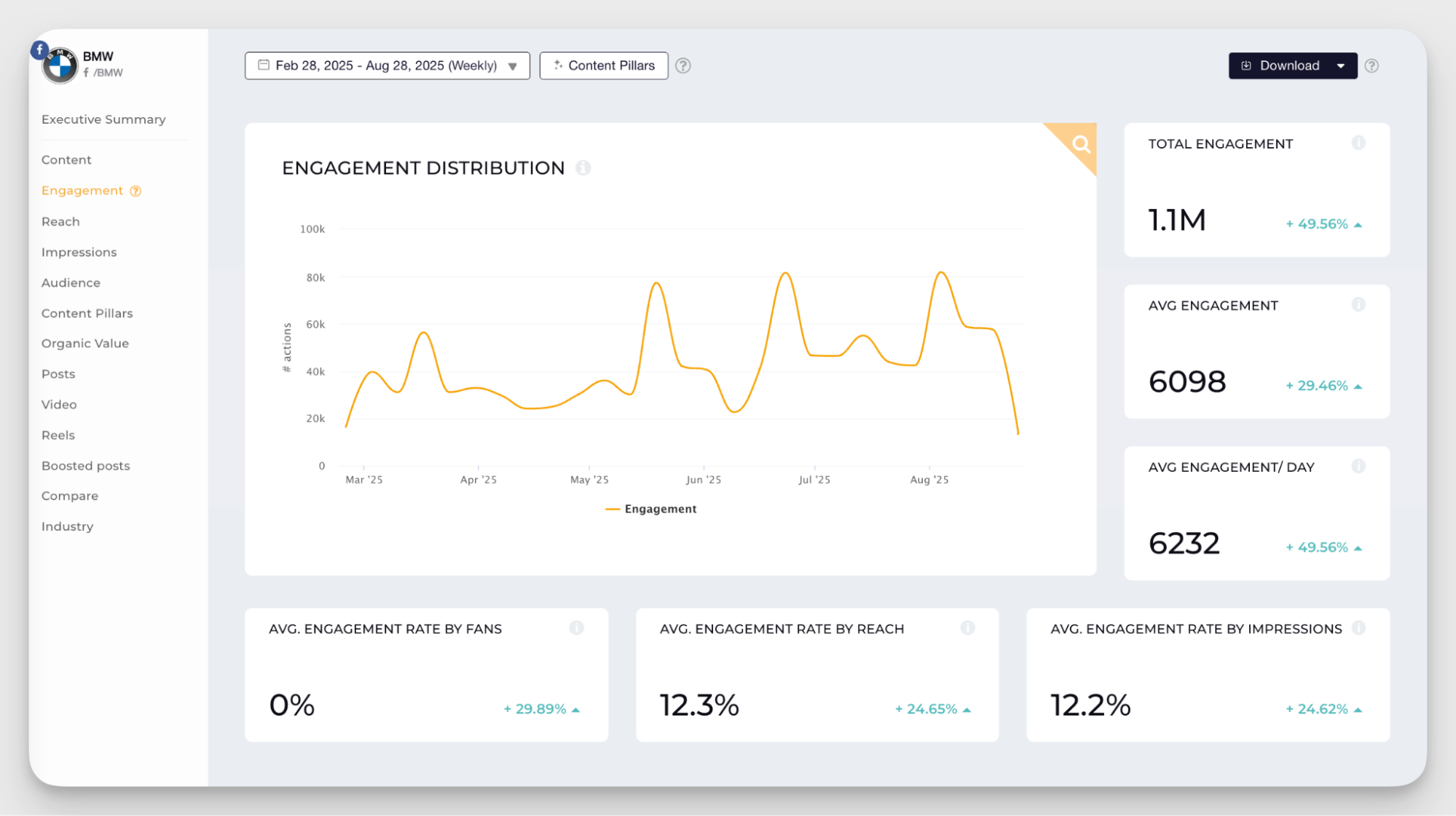
Reach and impression data reveal how effectively content spreads beyond the immediate follower base. BMW's average reach per post demonstrates strong organic visibility despite follower losses. This indicates their content successfully engages users who then share it with their networks.
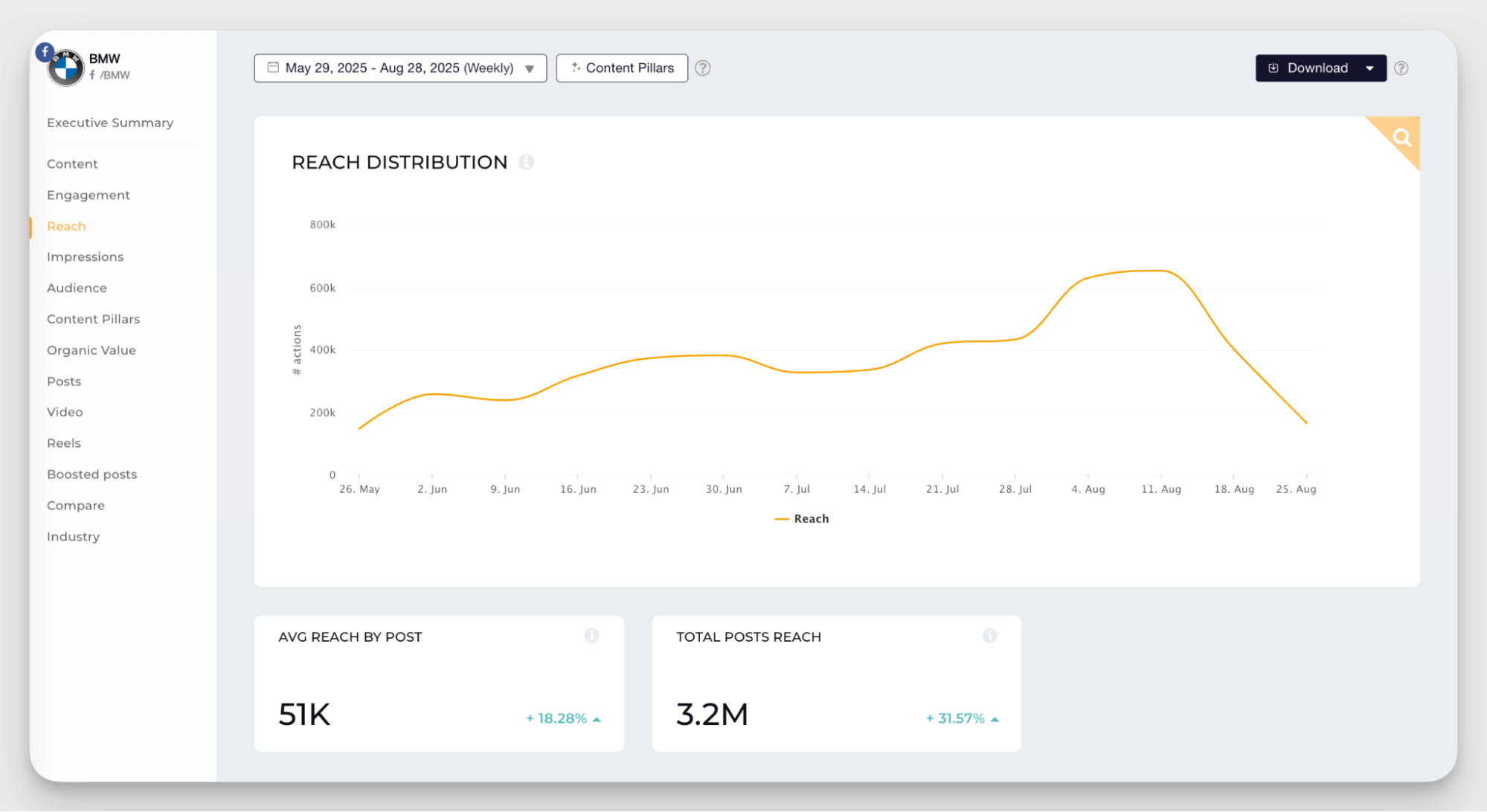
As seen in the example I ran you through, a Facebook audit is helpful in identifying strengths, while highlighting areas needing improvement. Using the right marketing data will get you a balanced approach, rather than having to jump to conclusions and change the wrong things.
Here's another insight that Kassandra gave me:
The most important metrics really depend on your goals, but I focus on two. I want to know not just how far the content went, but who it reached and what impact it had. I specifically pay attention to:
Engagement rate: This tells me how relevant the content is to the audience. A high engagement rate means people aren’t just seeing it but they’re responding to it.
Reach and impressions: Are we getting in front of the right people? Is our content being surfaced consistently?
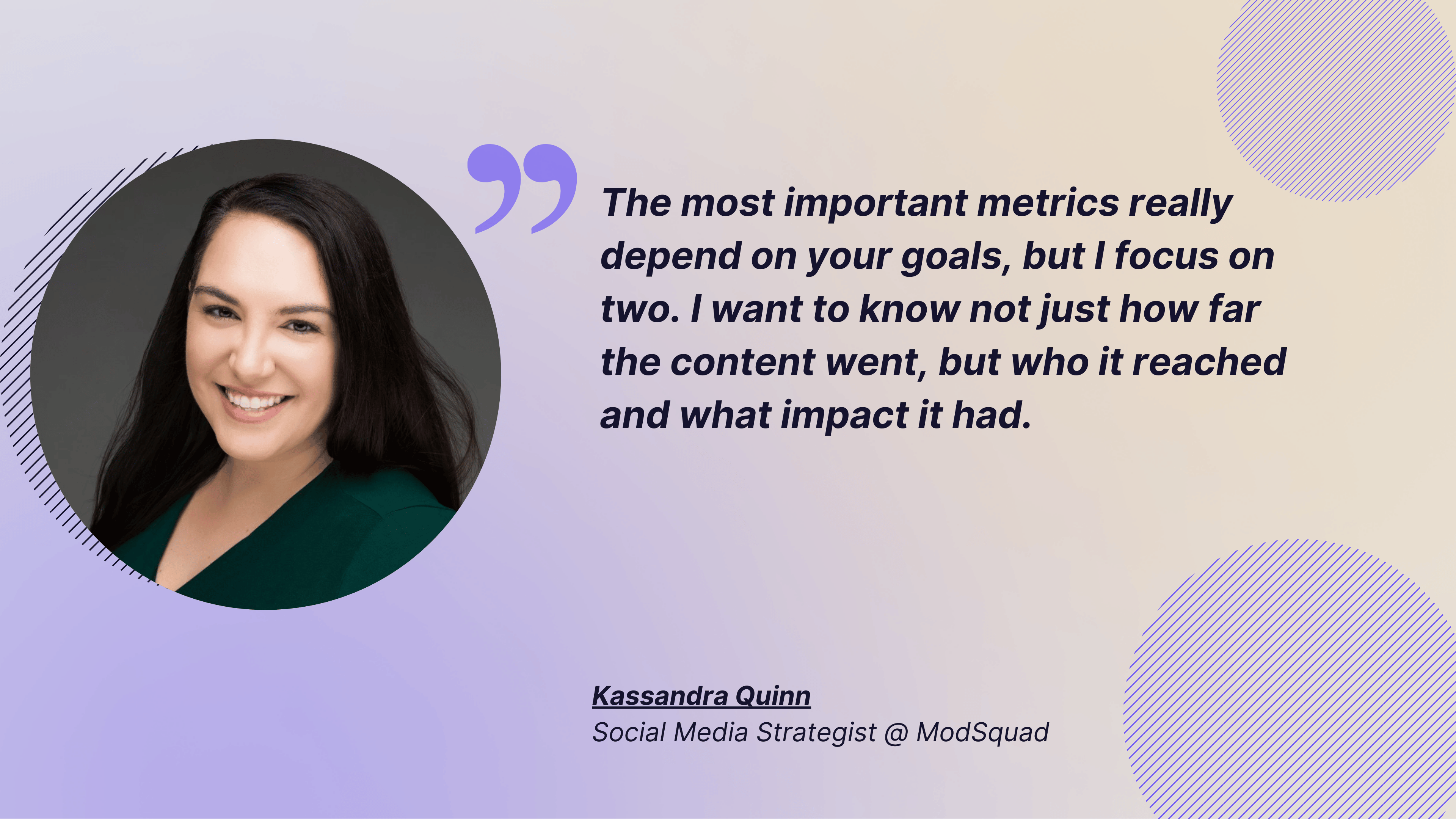
Run an analysis of organic vs paid efforts
Separating your organic versus paid social media performance helps you understand which content succeeds naturally versus what requires advertising.
Let me show you how the organic value feature within Socialinsider helps you quantify the monetary worth of your unpaid content efforts.
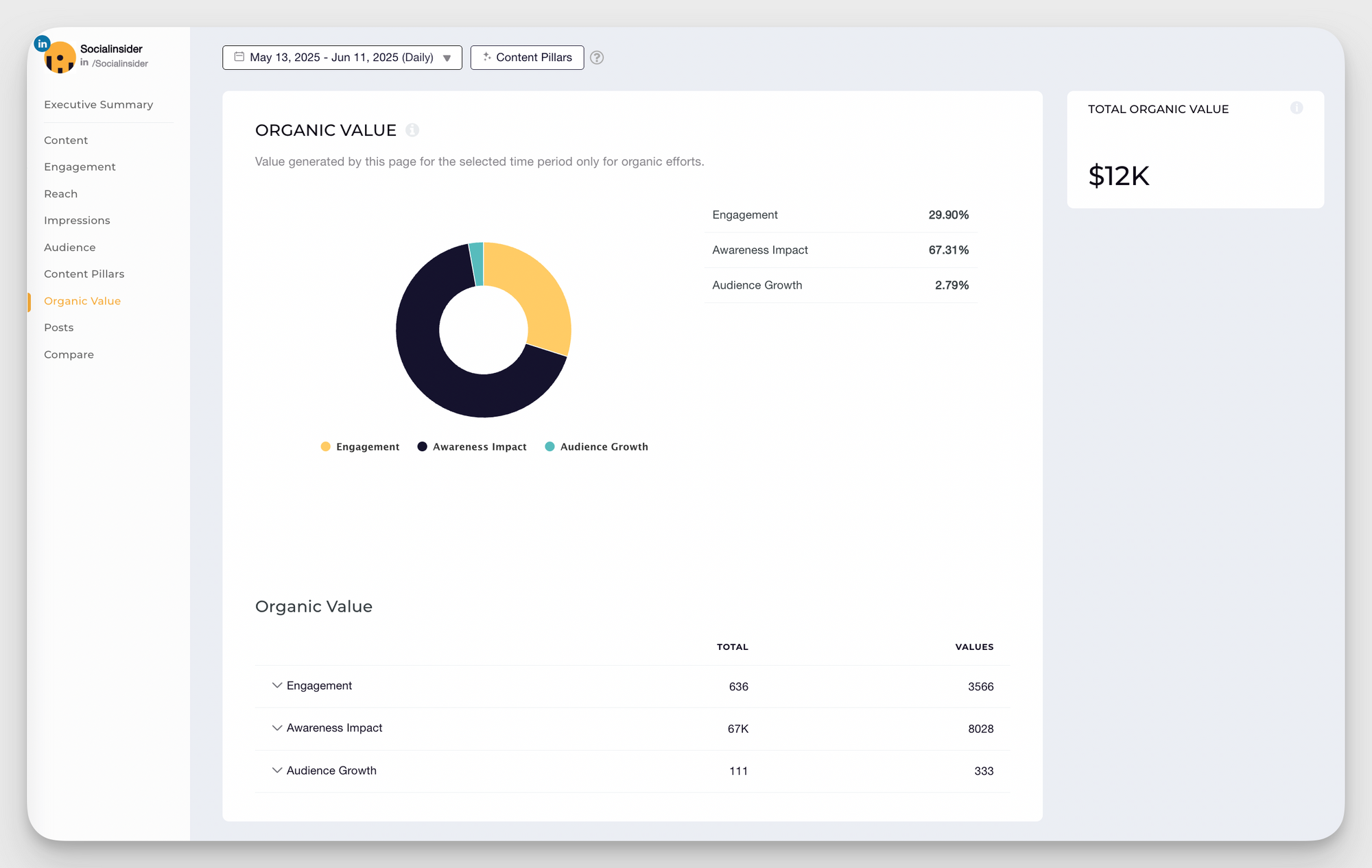
Organic value calculations assign dollar amounts to engagement actions, awareness impact, and audience growth generated without advertising spend. This metric helps justify your social media investment by showing concrete returns on organic content creation efforts.
Below, you can see how you can customize value calculations for different engagement types.
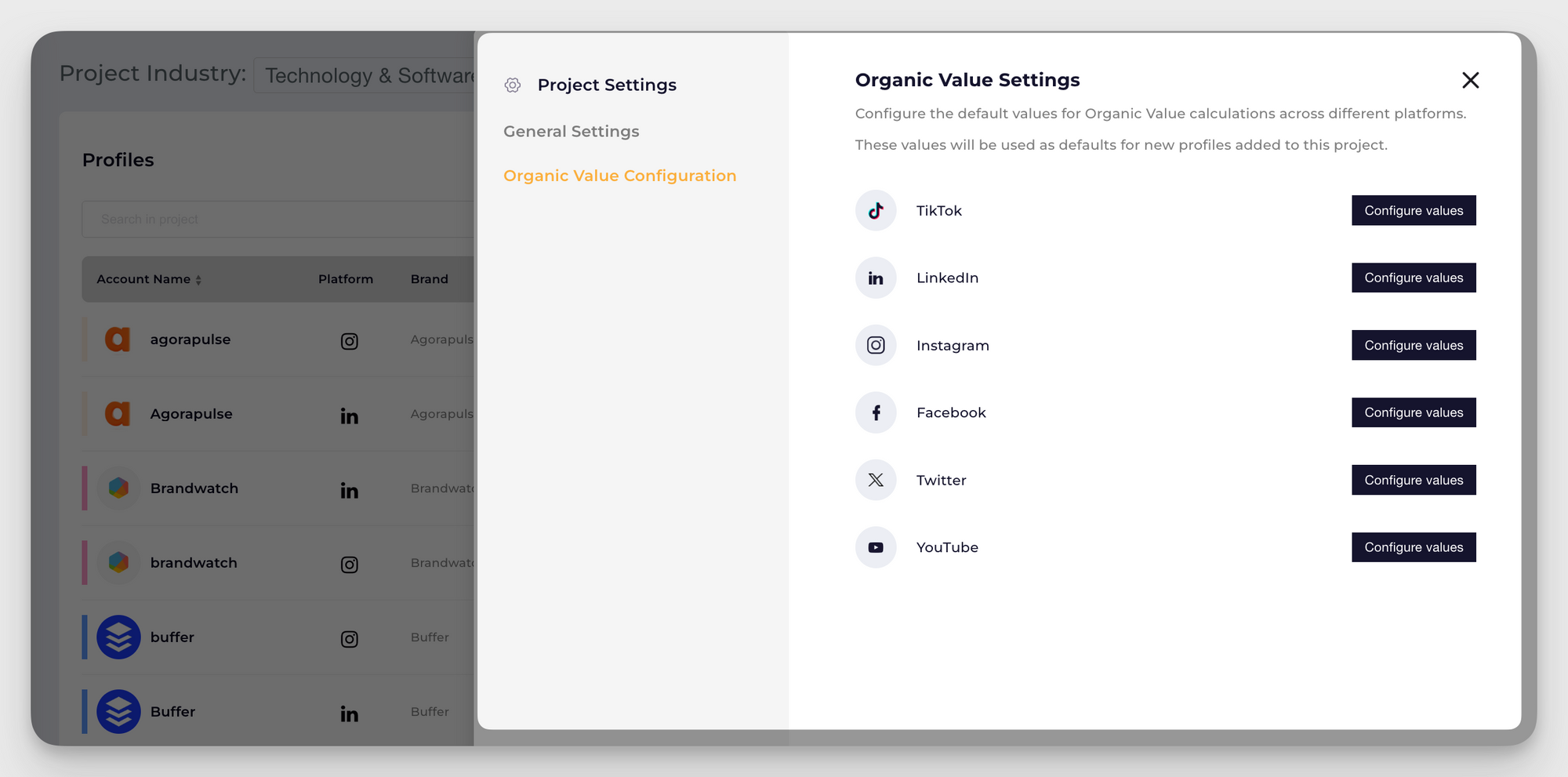
Setting specific values for reactions, comments, and shares creates a framework for measuring organic social media ROI across your campaigns.
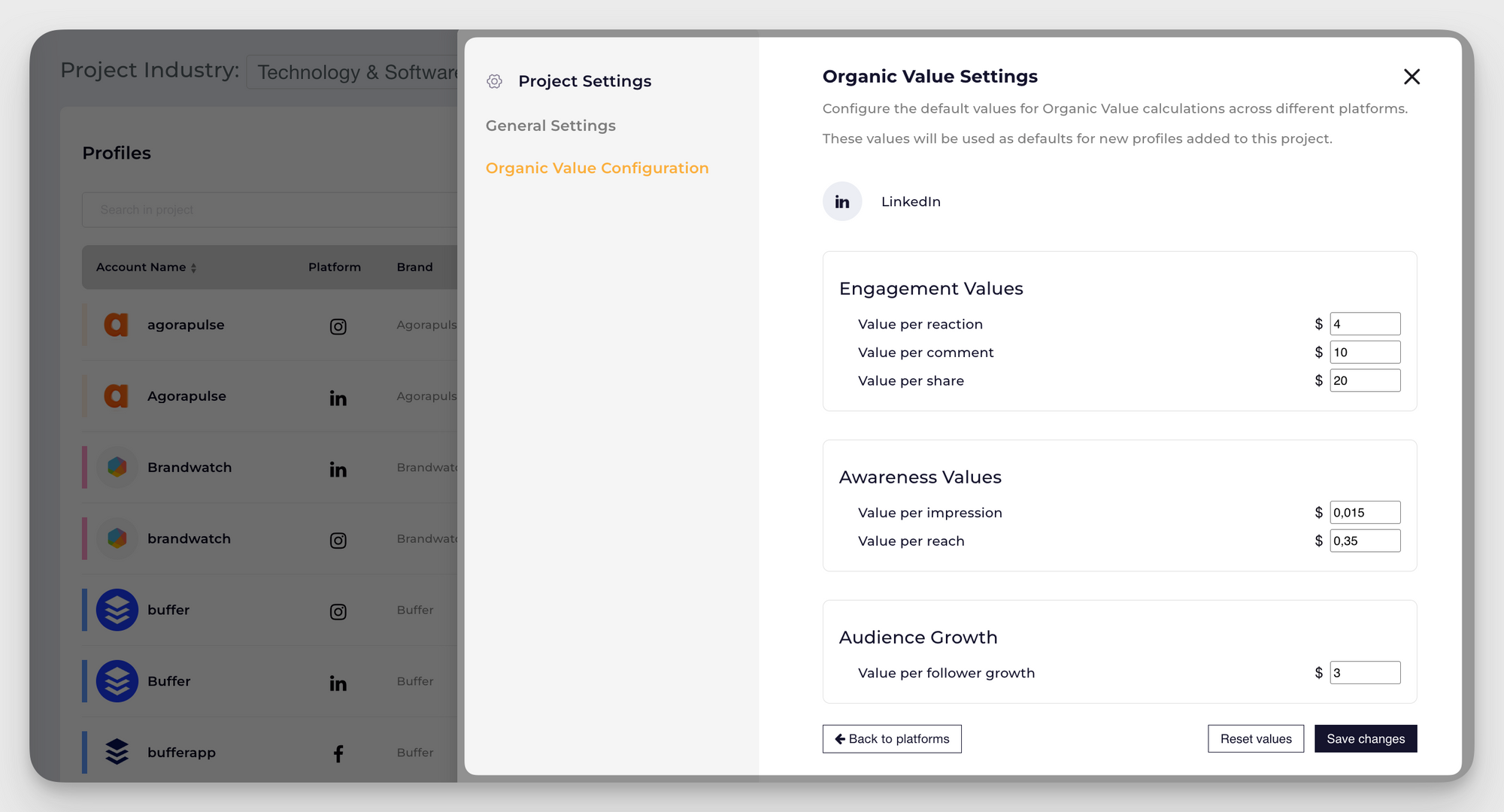
Track competitors' data
Your Facebook audit report becomes more actionable when you understand how your performance in social media compares to similar businesses. Think of this as your reconnaissance mission, gathering intelligence on what your competitors are doing without them knowing you're watching.
Moving forward with my BMW example, here's how the brand's data looks like, in comparison with Porsche and Toyota, revealing relative strengths and weaknesses across key social media KPIs. I find Socialinsider's “Key Insights Summary” feature to be very helpful, making it easier for me to analyze and distill important information.
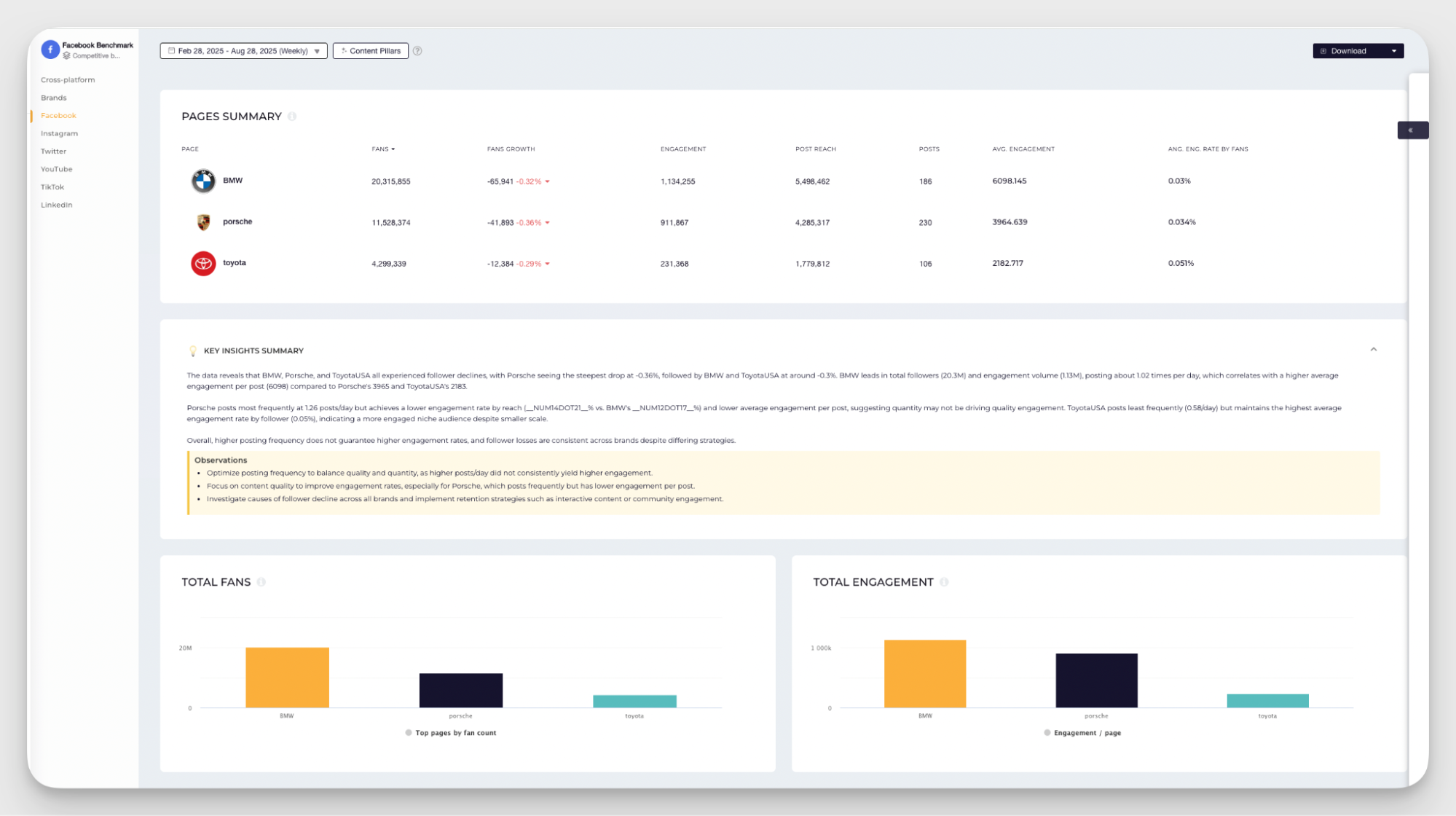
Other brands’ number of fans and average engagement provide context for evaluating your own social media metrics. If you're in the automotive industry with significantly lower engagement rates, this suggests opportunities to study other successful content approaches.
Content pillar comparisons reveal which topics perform best across competitor pages. BMW, Porsche, and Toyota all succeed with "Vehicle Showcases & Reviews" and "Industry News & Trends", indicating these themes resonate strongly with automotive audiences regardless of brand positioning.

Here's a tip that I have for you. Campaign-specific analysis becomes possible when you tag and categorize content systematically. The content tagging feature in Socialinsider allows you to track specific initiatives, making it easier to measure ROI on particular marketing efforts or seasonal promotions.
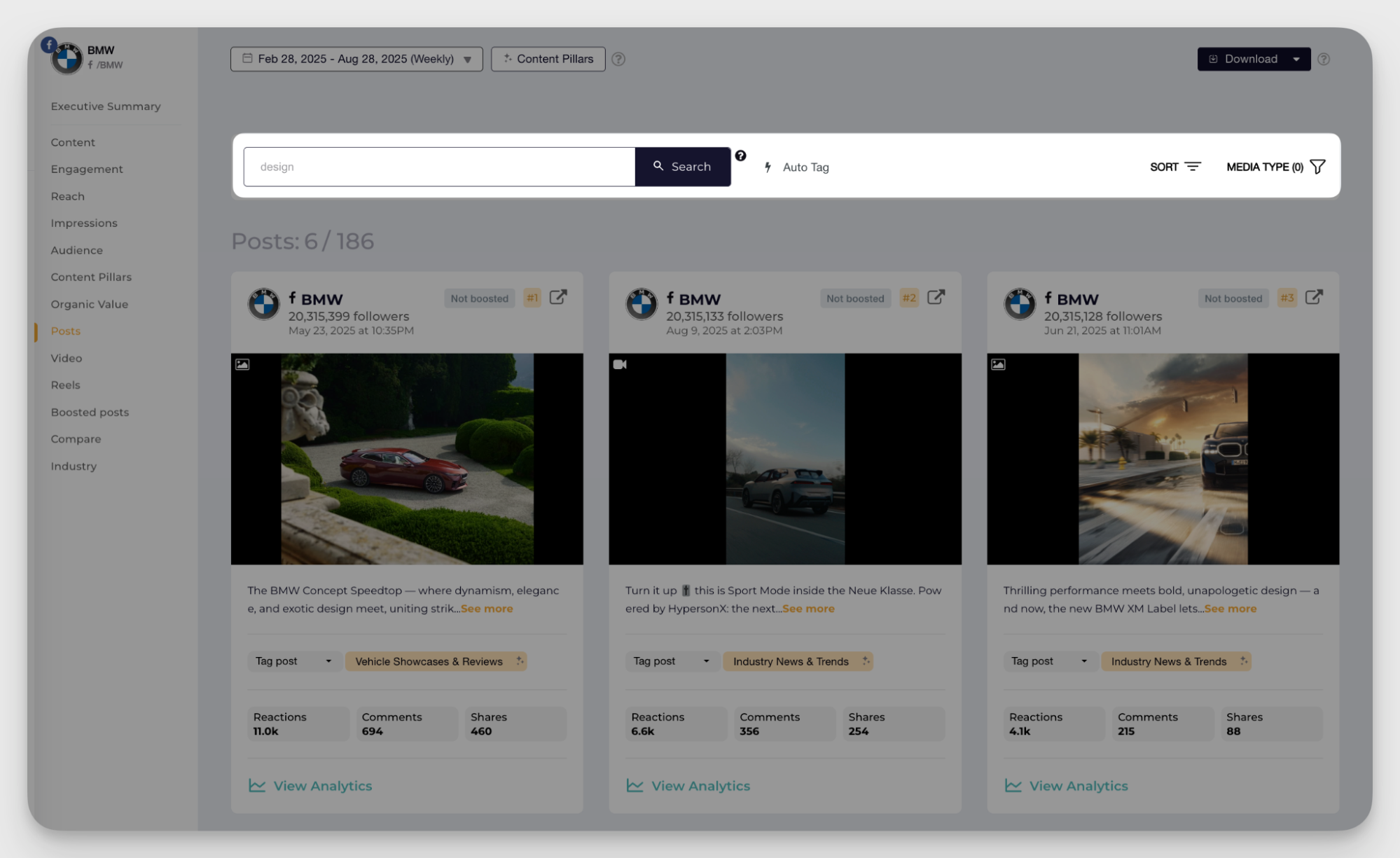
Understanding competitive insights through detailed competitive analysis tools helps identify content gaps your competitors haven't addressed, revealing opportunities for differentiation in your Facebook page audit strategy.
Final thoughts
The data you uncover through a Facebook audit only becomes valuable when you use it. Start with your biggest opportunities first, whether that's refining your content strategy to match your audience, or reallocating budget between organic and paid efforts. Then, gradually add in more optimizations.
And note that a Facebook audit shouldn't be a one-time exercise. Now that you know what to track, schedule regular monthly reviews. Focus on drawing actionable insights and improving things consistently.
Analyze your competitors in seconds
Track & analyze your competitors and get top social media metrics and more!
You might also like
Improve your social media strategy with Socialinsider!
Use in-depth data to measure your social accounts’ performance, analyze competitors, and gain insights to improve your strategy.



